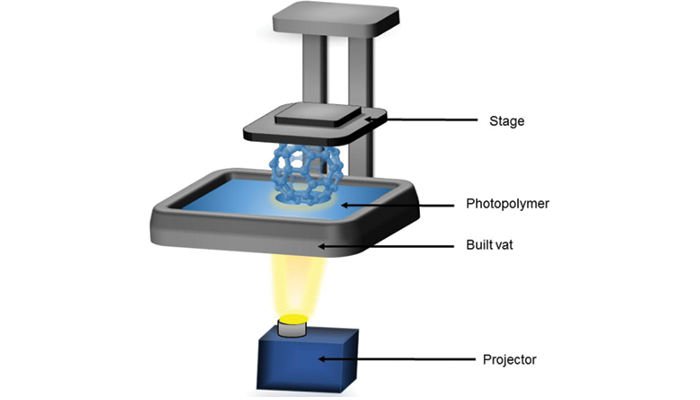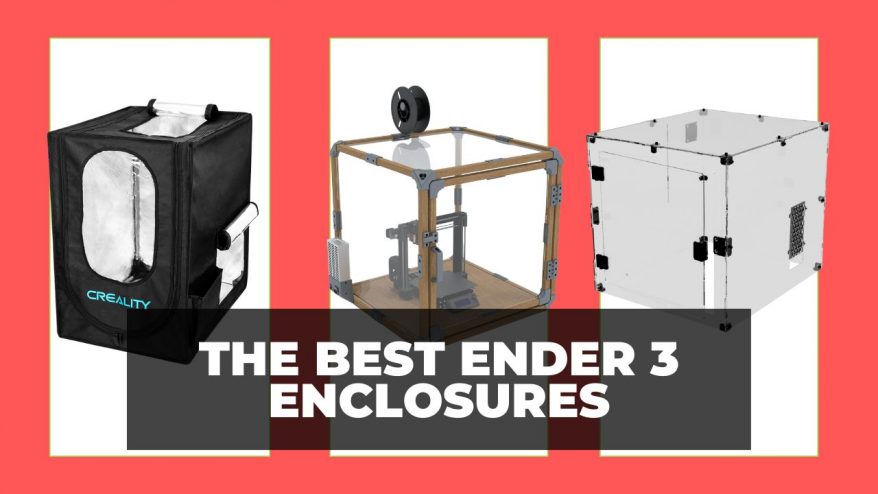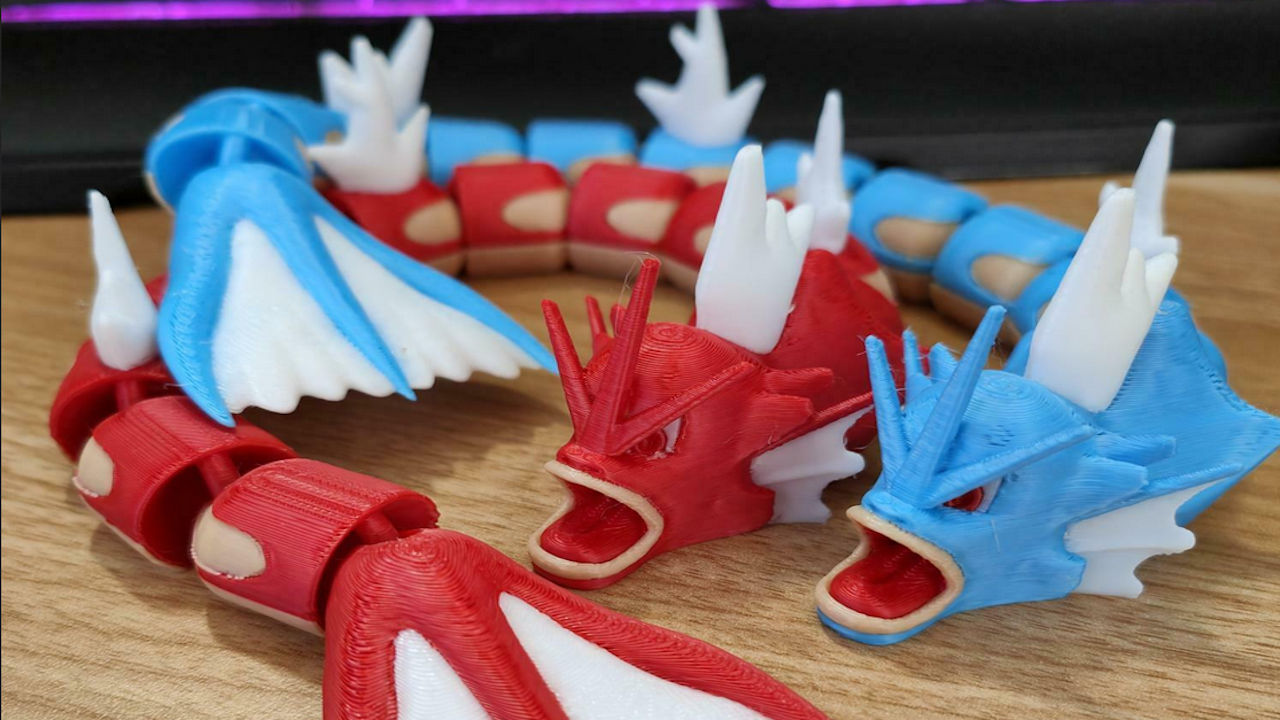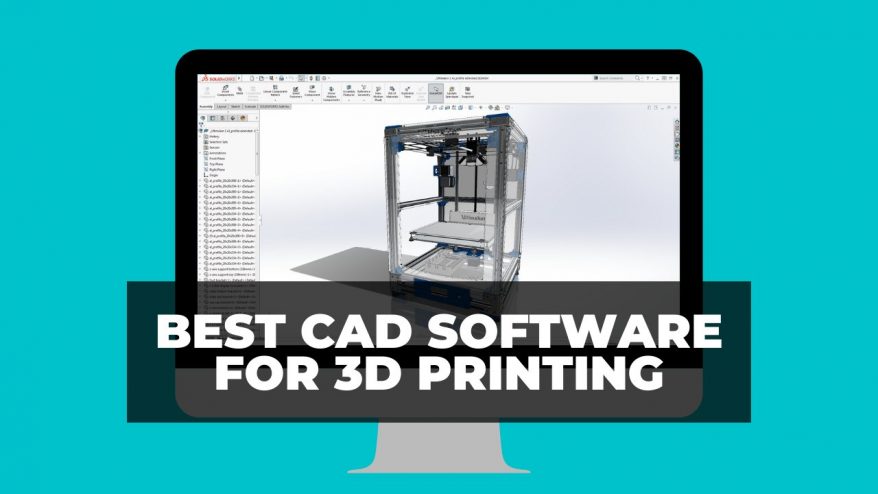
Stereolithography: Everything You Need To Know About SLA 3D Printing


At 3DSourced we’ve covered everything 3D printing and 3D since 2017. Our team has interviewed the most innovative 3D printing experts, tested and reviewed more than 20 of the most popular 3D printers and 3D scanners to give our honest recommendations, and written more than 500 3D printing guides over the last 5 years.
Stereolithography, or SLA, was the first 3D printing process invented, the first patent having been filed in 1984 by Charles Hull and granted in 1986. Since then, SLA has become a dominant technology, with SLA 3D printers taking over markets such as hearing aids and dental orthodontics.
Stereolithography is the most widely known of the vat photo-polymerization processes, and has spawned similar 3D printing technologies such as DLP (Digital Light Processing). But how does it work? And how will it change over the next few years?
View our guides to the other 3D printing technologies here.
This guide is also part of our FREE 3D printing technologies EBook. You can download it here.
Stereolithography: Explained
Reading time: Approx 5 mins.
Stereolithography 3D printing uses photo-polymerization to produce 3D models using an ultraviolet (UV) resin. The resin is cured in a vat — hence SLA and DLP are known as Vat Polymerization — via a light source.
A laser is used to solidify layers of resin in a similar layer-by-layer process to FDM. These liquid resins are the printing material of SLA 3D printers and the equivalent of 3D printer filaments in fused deposition modeling. The laser uses mirrors (sometimes known as galvanometers) to control and aim the laser to cure the resin.
Stereolithography and Digital Light Processing fall under the Vat Polymerization umbrella, and are very similar. We will explain the differences briefly here, though we have a more in-depth comparison between SLA vs DLP here.
- DLP is also very similar to LCD 3D printing — and we have a ranking of the best LCD 3D printers.
Setting up an SLA 3D Printer
Stereolithography, like all 3D printing technologies, requires a 3D printer model file from a 3D Slicer before printing. These STL files are not to be confused with SLA, they are the 3D files which have been sliced so the 3D printer knows which layers to print.
- We have a list of the best 3D slicers for resin 3D printing.
Resin 3D printers are equipped with: a resin tray to hold the UV resin; a mobile platform that functions as the Z axis which is lowered into the tank; a scraping system that functions as the X axis; a UV laser; focusing optics; and a mirrors called galvanometers on the X and Y axes to aim the laser beam.
| Name | Build Volume (mm) | Best price available at: |
|---|---|---|
| Anycubic Photon Mono | 5.1" x 3.1" x 6.5" | Amazon here |
| Elegoo Mars 2 Pro | 5.1" x 3.1" x 6.3" | Amazon here |
| Anycubic Mono X | 192 x 120 x 245 | Amazon here |
| Elegoo Saturn | 192 x 120 x 200 mm | Amazon here |
Bottom-up vs Top-down SLA 3D Printers
There are two types of stereolithography 3D printers, bottom-up and top-down. Most SLA 3D printers use a top-down method, though Formlabs use bottom-up. Each way has its advantages and disadvantages which we have outlined below:
Bottom-up Advantages
- Requires less resin as the part is pulled out of the vat. Also means machine can be smaller.
- Easier to control the thickness of each layer.
Bottom-up Disadvantages
- Requires the resin vat to replaced more often to avoid losing print quality.
- Increased chance of the print failing due to the part’s weight.
- SLA 3D prints must be printed at an angle.
Top-down Advantages
- Faster 3D printing as no need to separate from the build plate after each layer is printed.
- Less force on 3D part being produced so less chance of print failure.
- Less supports are needed as the part doesn’t need to be printed at an angle.
- Generally more reliable.
Top-down Disadvantages
- Requires a larger machine and requires more resin.
- Changing resin is difficult and replacing resin tanks is expensive.
- Thickness of the resin between the surface and the top of the 3D model must be controlled carefully.
Overall, it is up to you to decide which method works better with your goals with 3D printing. This video below explains the debate in terms of micro 3D printing, which may perhaps provide more information.
Stereolithography 3D printing
Layer sizes and spot size in stereolithography determine how accurate the printer is. SLA printers often have layer heights of around 50 microns, though this varies usually between 25 and 100 microns. Spot sizes are usually around 140 microns.
- Desktop resin printer accuracy: usually up to around 100 microns.
- Industrial resin 3D printer accuracy: often capable of 10-25 microns.
In SLA 3D printing, the UV laser hits the platform, which hardens the liquid resin and forms the first layer of the object being 3D printed. The laser hardens the resin based on the STL file sent to the 3D printer.
When one layer has been fully solidified, the platform descends so the next layer can start. The next layer is then solidified which continues until the whole object has been 3D printed and the model is submerged in the tank. After this, the platform is raised, pulling the 3D printed object back out of the tank. This is reversed based on whether you use a bottom-up or top-down resin 3D printer.
| Name | Build Volume (mm) | Price | Best price available at: |
|---|---|---|---|
| Formlabs Form 3 | 145 x 145 x 185 | $3,499 | Dynamism Store here |
| Zortrax Inkspire | 74 x 132 x 175 | $2,299 | Matterhackers here |
| Peopoly Phenom | 276 x 155 x 400 | $1,999 | Matterhackers here |
| Flashforge Hunter | 120 x 68 x 150 | $3,499 | Amazon here |

Stereolithography Post-printing, Warping, Curing
Stereolithography, unlike Selective Laser Sintering or Binder Jetting, uses supports. These supports require a solvent to remove excess resin, such as isopropanol. Unlike FDM, these supports are always made of the same material as the object being 3D printed. (This is because SLA printers cannot be dual extruder printers, like with FDM.)
Unlike Selective Laser Sintering or FDM, stereolithography 3D printing requires a post-treatment to strengthen the model. This involves the part being cured under a UV light after being 3D printed which further strengthens the model and allows the material to achieve its optimal properties.
If you’re interested in purchasing an SLA resin printer, we may be able to help:
*One of our trusted partners will be in touch following a quote request.
As with FDM, parts can warp due to the shrinking during part cooling. As the layers of the part were printed at different times and therefore are different temperatures, this can cause warping and slight distortions in shape. More flexible resins can be more at risk of warping.
This video below explains the differences between the post processing in FDM and SLA.
Stereolithography Materials / Resins
Stereolithography 3D printers use resins, rather than the plastic filaments used in FDM. These resins are more expensive to 3D print with than filaments, and start at around $35 per liter.
- The cheapest resins are offered by companies such as ELEGOO, starting at around $35. Grey resin can be bought here.
- Specialized resins such as flexible resins cost considerably more. An example is Siraya’s flexible resin here.
- View all our recommended resins: Matterhackers USA & NA here / 3DJake UK & Europe here
For high detail, castable resins, you may be out of pocket by as much as $400 per liter. Moreover, it is important to remember that resins do not last forever, they spoil eventually. Their shelf life is usually around a year.

Print Quality
Parts printed with SLA have a superior surface finish than models printed using SLS 3D printers or FDM 3D printers for the same layer thickness. The print quality can be so high that individual layers are barely even visible.
However, there are few colors available to resin 3D printers, though Formlabs recently released a variety of new colors for their SLA 3D printers. The trade-off for this very high quality is few available materials or colors.
Applications
Stereolithography is often used for rapid prototyping because of its fast speed, accuracy, and part strength. Parts can be made quickly and at a low cost. Furthermore, stereolithography allows for complex shapes to be created which traditional manufacturing techniques simply cannot make. This makes 3D printing a fantastic niche option for oddly shaped models.
In addition, SLA 3D printing can 3D print immediately functional objects. This means no extra time needs to be spent changing the model, it works straight out the print.
Apart from rapid prototyping, Stereolithography has the most applications in industries such as the dentistry and jewelry industry. This is because SLA can be used to quickly create injection molds which are then used to create jewelry pieces such as necklaces or rings. This is sometimes through Lost Wax Casting, which indirectly uses SLA to create 3D printed jewelry.

Moreover, dental pieces like crowns can be created through SLA due to its high quality.
The biggest achievement of 3D printing in an industry however is in hearing aids. Since its introduction, over 10 million hearing aids have been made using stereolithography, and over 97% of hearing aids are now 3D printed. This is because accurate hearing aids based on each patient’s ears can be created in-house, quickly, and for cheap. This has revolutionized the industry, showing just how powerful 3D printing can be.
Stereolithography has applications in many industries, and also spawned a number of other 3D printing techniques:
DLP (Digital Light Processing)
DLP is similar to SLA, but it uses a video projector instead of the laser used in stereolithography. This enables DLP to scan through entire objects at a quicker pace than SLA, as it can do the entire layer at once, unlike SLA. However, DLP is unable to 3D print with as high resolution, and are more limited in how many parts that can be printed simultaneously. SLA can print many objects within the build volume concurrently without a problem.
- For more information, we’ve written our complete guide to Digital Light Processing which you can view here.
- Additionally, compare all the differences between DLP vs SLA in our comparison article here.

CLIP (Continuous Liquid Interface Production)
Made famous by Carbon 3D, their CLIP technology makes printing objects much faster. Most famous for their TED Talk, “What if 3D printing was 100x faster?” Carbon demonstrated the speed of their CLIP technology by printing a full object in the 10 minutes during the talk. This is an upgraded form of stereolithography which we will hear more about in the future.
You can view Carbon 3D’s TED Talk here: (but don’t forget to read the rest of this article where we discuss the Advantages and Disadvantages of stereolithography)!
Advantages and Disadvantages of Stereolithography
Stereolithography Advantages
- Smooth surface finish of models, especially if this area had supports on it.
- High accuracy with barely visible layers. In addition, SLA prints have good dimensional accuracy and therefore is ideal for parts where intricate figures are needed (such as the dental, hearing aid and jewelry industries).
- Somewhat scalable. Many LCD 3D printers now are able to print many (often 8-10) of the same model at the same time, and because of the technology, prints multiple parts at the same speed that just one model would have been printed. This makes stereolithography an option for medium production instead of injection molding.
Stereolithography Disadvantages / Limitations
- SLA 3D printing takes longer than DLP. This is because DLP can trace the cross-section of a model in a single frame, whereas SLA 3D printers cannot.
- Little versatility in printing parameters. When printing with stereolithography, you can only change layer heights, the resin material, and location of supports.
- Polymer materials create models which can be brittle and are not as strong as other 3D printing technologies.
- Parts created through stereolithography have a limited lifespan and will start to lose their mechanical properties eventually. Moreover, they will start to degrade in sunlight. These parts require new coatings to extend their usable life.
If you’re looking for an SLA printer to buy:




















